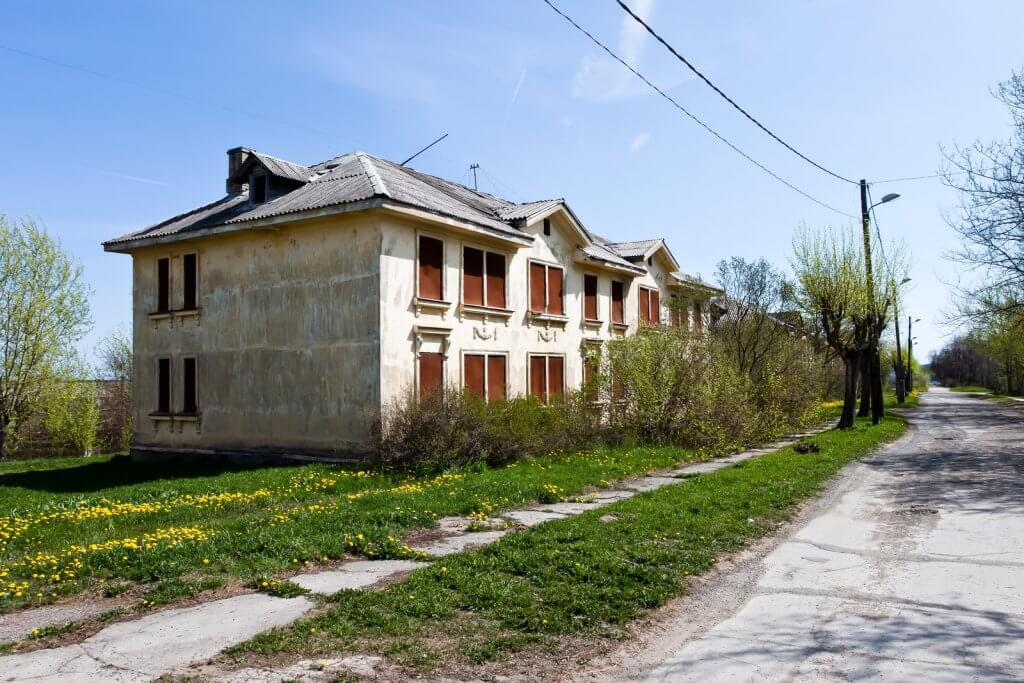
Are you trying to sell a house with subsidence?
In this articles we will explain what subsidence is, the causes, the telltale signs and how much this costs to repair.
What is subsidence?
Subsidence is when the ground beneath a property sinks and pulls the property’s foundations down with it. When the foundations sink it causes the walls and floors to move, leading to cracks and often destabilises the property’s construction.
What causes subsidence?
Subsidence can be caused by a range of things including:
- trees growing in close proximity to the property’s foundations;
- clay shrinkage;
- soil being washed away beneath the property;
- mines – both used and disused;
- formation of underground caverns; and
- poor foundations.
Clay shrinkage
Clay holds a large amount of water. As the water evaporates the clay can shrink leading to downward movement of anything above the clay layer, causing subsidence. Heat waves and hot sustained hot periods can lead to an increase in subsidence.
Trees
Trees can be the most beautiful part of any garden, but they can cause significant damage to foundation, including subsidence. Trees can cause subsidence in 2 ways:
- Drawing water out of the soil can cause that soil to shrink. Its been recorded that mature trees can draw nearly 1,000 litres per day.
- The roots from trees growing near to a property’s foundations can lead to ground shift meaning the soil becomes less stable.
Washing away of soil
Water in soild can lead it to move and become less stable. The leading causes are escape of water (eg. leaking pipes or drains), flooding and heavy rainfall. Soil being washed away generally happens over many years, with the exception of flash flooding.
Poor foundations
Building methods have changes substantially over time. Many older properties were built to less stringent regulations. This often means that older properties have shallower foundations. The quality of the foundation is also a key cause of subsidence. If the quality is poor and unsuitable materials have been used, or the earth has not been prepared appropriately the foundations may move or deteriorate. This can then lead to subsidence.
How do you spot subsidence: what are the signs ?
Seeing changes to the foundation of a building is almost impossible and keeps many of the direct signs of subsidence hidden away. This means that subsidence is often identified from signs above ground. However, you need to know what to look for to determine that these signs are in fact subsidence.
Cracks in the walls
Not all cracks are a sign of subsidence. Some are just the result of settlement and are perfectly normal. However cracks that are a result of subsidence have a few key characteristics, that can be determined by answering the questions below:
- Is the crack larger at the top than at the bottom?
- Can a 10p coin fit within the crack (roughly 3mm)?
- Are the cracks visible on the inside and outside of the building?
- Are the cracks found near to openings, such as doors and windows, or where an extensions joins the building?
- Do your doors and windows no longer fit? Or are they now tighter than they used to be? These can be signs of movement and subsidence.
- Has your wallpaper started to wrinkle or crease? This can happen due to condensation or subsidence. One of the best ways to check if it’s a result of dampness is to check windows in the morning for signs of condensation. If condensation isn’t evident, it could be subsidence.
How much does it cost to repair a house with subsidence?
We could write a whole guide in itself to repairing a house with subsidence as there are a number of options available, including underpinning, piling, pass pour concrete. All of these options are expensive and the exact cost needs to be determined by a structural surveyor and experienced contractor who will determine the exact cause the most appropriate remedy. The costs are likely to be over £10,000 even for modest sized properties, and can be as much as £50,000. This is just the financial cost. There are likely to be stress, hassle and emotional costs, and the need to deal with building contractors and structural engineers. Depending on the size of the job, and number of contractors working on the building it may take a few days to a week. If the property needs extensive work, with remedial work to the internals e.g. replacing doors, windows and door frames, reinstalling lintels and replacing floors, as well as repairing drains it could take months.
You will need to get the work certified as without it your property’s value will be significantly reduced and the number of buyer’s interested will be much smaller than in a traditional home.
Interested in selling your property with subsidence to a serious buyer?
Are you interested in getting a free, no-obligation offer from a serious buyer for your property that has subsidence?. If you need a fair price and to move forward without stress and hassle K&G Lettings Limited would be your best option. We understand that you need to move on with your life, and that selling a house with subsidence can be stressful, expensive and take months. At K&G Lettings Limited, we specialise in helping people move on with their lives by buying their house quickly and without hassle.
Do you want to get a fair offer for your property with Subsidence? If YES, fill out the form below.
Even if you don’t decide to sell, we’d love to answer any questions you might have. Give us a call today on 01482 961961.
The information presented in this article is for educational purposes only and should not be considered legal, financial, or as any other type of advice.



